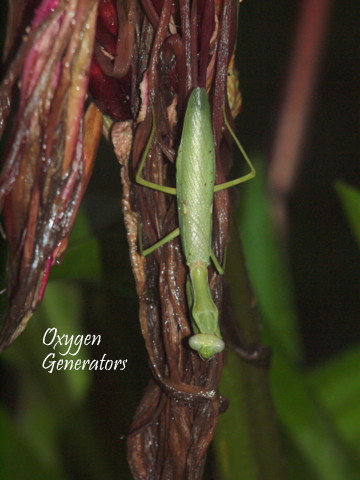I waited for the rain for a long time, so when it arrived i have to really experience it. I didn't have a thorough soaking, but i went out without an umbrella or a hat, just let it wet my hair and my shirt. It is comforting and felt like I have done a ritual. Oh i should have thought about that when i am still in there, i should have put very good positive thoughts in my electromagnetic field while in the rain. I think I am late for that, anyway, i had fun. After the slight wetness i came back to the house and got an umbrella for the camera, and started shooting.
Earlier we had a thick fog, which visits us once-in-a while during the rainy season. This time there was a visibility of around 10-meter radius. I am imagining i am somewhere in Scotland or the mountain states in the US except that the temperatures here are higher. In fact I only have a thin shirt and i didn't feel cold. Maybe that temperature was around 28C. So the clouds just went very low to experience the earth's vegetation, what about that!
Crinum lily has a good soaking, it has all stages of blooms
The big bunch with opened flowers fell off, cannot bear the heavy beating of the raindrops
Caesalpinia pulcherrima flowers had to droop
Pachystachys lutea bracts and flowers were able to stand the raindrop pressure
Cacao's new emerging leaves look so happy with the heavy rains
This praying mantis has a poker face, so i can't discern if it is happy with the rain or not, it just stayed there on the spent blooms of the crinum
Ti plants (Cordyline fruticosa) look hilarious and having a good soak after the long scalding heat they experienced a few weeks back. The yellowish sunscald suddenly becomes green now!
Duranta erecta hasn't been pruned, so the limbs are trying to outdo each other in reaching the sunlight. Even the Florida beauty emerged at the center of the canopy for the light it wants to see too. Survival of the fittest is being shown in this little patch.
The crotons whose leaves were drooping in the last few weeks now looks so satiated and healthy. It is a very pliant and adaptable plant. I hope there are larvae which eats them too.
The dormant caladiums show up everywhere, they are beautiful but later on my sister will uproot them including their tubers to limit their invasiveness. We have killed and dried a lot of Colocasia esculenta tubers last dry season to limit their population in the property.
Asparagus fern dried up in May, and now fabulously growing again. I still have to prune the dried stumps. I am trying to train it climb the molave tree near our gate.
Caesalpinia pulcherrima leaves with colored beads in them
Atis or custard apple (Anona squamosa) has lots of mealy bugs earlier, now they get a thorough bathing and hopefully got rid of the infestation.

































![Outdoor-Wednesday-logo_thumb1_thumb1[1]](http://lh5.ggpht.com/-6Mig6wSdCPA/UA8P8K2JLkI/AAAAAAAAEgg/GWduM9Nc0w0/Outdoor-Wednesday-logo_thumb1_thumb1%25255B2%25255D.png?imgmax=800)



















